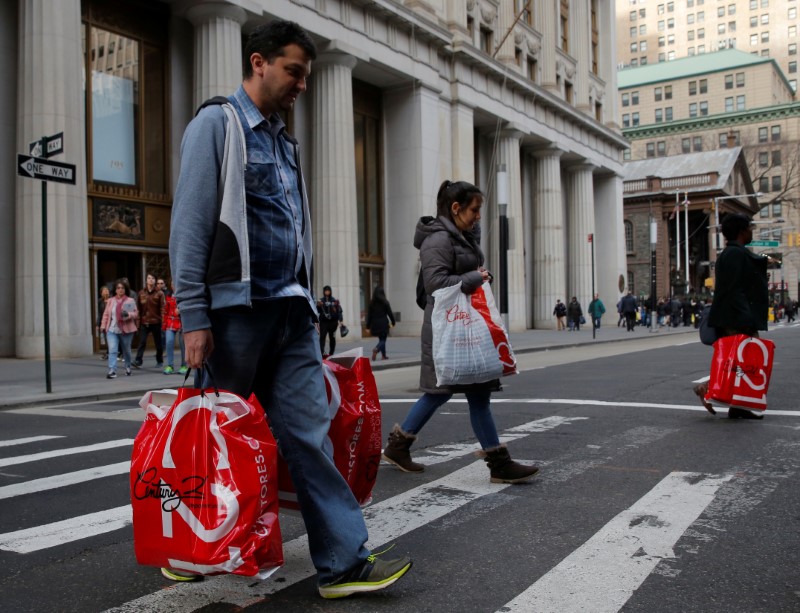 © Reuters. People cross Broadway with shopping bags in Manhattan, New York City
© Reuters. People cross Broadway with shopping bags in Manhattan, New York CityBy Howard Schneider and Jason Lange
WASHINGTON (Reuters) – Households are feeling more stable, small businesses are making money and many expect to expand and hire in the coming year, signs of continued optimism in two key parts of the economy, the Federal Reserve reported Tuesday in a pair of annual surveys.
Among more than 8,000 small businesses and more than 12,000 households covered in separate surveys late last year by the Fed and its 12 regional banks, the message was similar: economic conditions have been getting better and the expectation is for the good times to continue.
“We see a decided uptick” in the economic and credit conditions faced by small businesses, said one Fed official involved in the small business survey. “We are seeing improved business confidence and improved business performance,” with profitability and access to finance increasing in 2017, more than 70 percent of firms expecting revenue growth next year, and 48 percent expecting to add employees.
Among households, 74 percent of U.S. adults said they were financially comfortable or at least okay in 2017, four percentage points higher than in 2016 and 10 percentage points higher than the first survey year of 2013. Improvement was strongest in lower income households. The percentage of households that reported they were struggling financially fell to 7 percent from 9 percent last year.
The results from the surveys show that improvements in household and business conditions that took root under President Obama continued through the first year of the Trump administration.
Both findings are potentially significant for the economy’s future performance. Businesses with fewer than 500 employees generate perhaps 60 percent of new jobs, the New York Fed estimated in material released with the small business survey, and many report plans to expand in 2018.
Consumer spending, meanwhile, accounts for the bulk of U.S. gross domestic product, and strong household income growth in recent years has buoyed the economy overall.
“The mass of the consumer sector is in pretty good shape and that should continue,” Nathan Sheets, chief economist at PGIM Fixed Income said in an interview.
However, based on answers to a series of questions, about two in five adults faced what the Fed judged to be a “high likelihood of material hardship,” such as an inability to afford sufficient food, medical treatment, housing or utilities. About 4 in 10 said they could not meet an unexpected expense of $400 without carrying a credit card balance or borrowing from a friend.
Among the smallest firms, those with less than $100,000 in revenue, about 74 percent had trouble paying their bills, and a majority of those were either averse to borrowing or worried they would be turned down and so did not apply for credit.
But in overall the results for positive, said Fed officials.
Among firms that did apply for loans, for example, 46 percent received all they requested, compared to 40 percent last year. Nearly 60 percent wanted to use the money to expand.
Fusion Media or anyone involved with Fusion Media will not accept any liability for loss or damage as a result of reliance on the information including data, quotes, charts and buy/sell signals contained within this website. Please be fully informed regarding the risks and costs associated with trading the financial markets, it is one of the riskiest investment forms possible.
Source: Investing.com



























